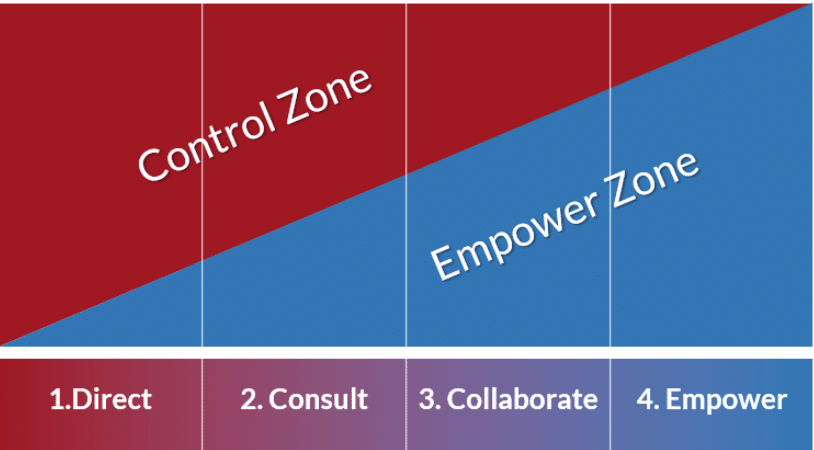
With the natural stressors that pervade our economy and society, there’s no denying the prevalence of volatility in the workplace. Change is inevitable. Good leaders understand this and can efficiently adapt to changing circumstances. More importantly, they are resilient enough to withstand the unexpected and challenging situations these shifts may bring.
Let’s dive further into this and discuss four reasons why flexibility and adaptability in leadership are needed.
What Are the Differences Between Flexibility and Adaptability in Leadership?
Before discussing why flexibility and adaptability are crucial to success, it’s essential to define the terms.
Flexibility and adaptability are often used interchangeably, but there are some key differences between them. While adaptability is the ability to adjust your situation to suit a new environment, flexibility is the willingness to do so. The more you are willing to change or compromise, the more flexible you are.
For example, let’s say your organization is making structural changes that cause a shift in work hours, being able to work a 3 p.m. to 11 p.m. shift (as opposed to a 9 a.m. to 5 p.m. shift) while taking on new teams, clients, and demands reflects your adaptability. How often you’re willing to take on this new schedule illustrates your flexibility.
Why Must Good Leaders Possess Flexibility and Adaptability in the Workplace?
There are four reasons why good leaders must be flexible and adaptable:
1. To Learn from Challenges
With flexibility and adaptability, leaders see value in challenges rather than running away from conflict. Instead, they tackle the challenges head on because they understand there is much to learn from errors and roadblocks.
Studies show leaders who cannot adapt well are described by their bosses and colleagues in the following ways:
- Risk avoidant
- Defensive
- Not open to new and diverse ideas
- Closed to feedback
As flexibility and adaptability encourage new ways of thinking, leaders who possess them hold the emotional knowledge required to
- Learn from mistakes and handle them with poise.
- Be open to and respond well to feedback.
- Stay composed under pressure.
2. To Create and Adjust Plans
Good leadership does not simply entail being able to establish well-organized, strategic plans. It’s also about creating agile plans that are agile enough so that when curveballs are thrown your way, you know how to adequately manage the situation. Being able to achieve this elevates your value and the value of your team.
When leaders understand diverse thinking and are open to stepping outside their comfort zone, they can easily shift as things change around them. Leaders who act quickly are twice as likely to make change happen as those who are not adaptable and flexible.
3. To Be Better Equipped with Diverse Leadership Styles
Daniel Goleman, an expert on emotional intelligence, explains that no one type of leadership style reigns over others. Rather, the style to use depends on the situation and the individuals involved. Leaders must be able and willing to adjust their style to align with the unique needs of each new situation.
Here are the six leadership styles Goleman discusses:
- The coercive style: This is a “do what I say” approach that is useful during high-stress situations requiring a fast turnaround.
- The authoritative style: Leaders explain an overall goal to team members and entrust them to achieve it using their own methods. This may be helpful when your team is testing out a new strategy.
- The affiliative style: This approach puts team members first, focusing on establishing team harmony and morale. Leaders may opt to use this to help team members understand and apply empathy in their day-to-day relationships.
- The democratic style: Team members have an equal voice in decision-making and ideation. Leaders may choose to incorporate this style if they want to initiate collaboration.
- The pacesetting style: Leaders set high expectations, which they also embody. This might be used with self-motivated team members.
- The coaching style: This is often used for personal development rather than work-related tasks. The coaching style can be beneficial for team members who are looking to improve their weaknesses.
4. To Create Successful Teams
Being able to learn from mistakes, strategically adjust plans, and incorporate various leadership styles ultimately helps leaders build stronger teams. When flexibility and adaptability are practiced on the leadership level, they get passed on to team members.
Whether it’s confronting crises or meeting deadlines, all issues require a degree of change—and the more open and willing team members are to these transitions, the stronger they can become.
As Albert Einstein said, “The measure of intelligence is the ability to change.”
What Does Adaptability Look Like in the Workplace?
Understanding what adaptability looks like entails identifying the top three qualities of adaptive leadership:
1. Willingness to Learn
Adaptive leaders are always open to learning. They are never discouraged by failure. Instead, they acknowledge failure is a part of learning.
A strong leader may engage in the following to enhance their learning:
- Collaborate with team members.
- Seek feedback from team members and colleagues.
- Ask questions.
- Initiate and participate in discussions to assess how to readjust their strategy.
2. Action-Oriented
An adaptable leader is responsive to change and proactively finds solutions. They possess a strong sense of immediacy and focus on a task at hand to see it through fruition.
Taking an action-oriented approach may encompass:
- Critically analyzing the change initiative to understand the task at hand and what needs to be completed
- Setting up milestones and SMART goals to ensure you attain your objectives
- Establishing relevant metrics that align with goals to ensure initiatives stay on track
3. Resilience
Not only does an adaptable leader possess resiliency, but they also instill this quality in others. Research indicates resilient businesses thrive in the face of change and uncertainty.
Resilience may be manifested through the following:
- Handling mistakes or setbacks with poise and grace. Errors are bound to happen, and an adaptable leader proactively finds ways to mitigate the situation.
- Practicing healthy conflict management. Conflict among team members is inevitable in the workplace. When this happens, adaptable leaders constructively manage conflict that benefits all parties.
How Can Leaders Improve Their Flexibility and Adaptability Skills?
There are three key ways leaders can improve their flexibility and adaptability:
1. Customize Your Leadership Approach
Being a flexible leader means operating on a continuum. There isn’t one way to lead; the best way to lead other depends on various factors:
- The team members you are leading
- The skills, abilities, and willingness of the team members you are coaching
- The variables of the situation (e.g., project task and requirements)
These factors will elicit the type of attitude you must embody to successfully lead yourself and your team through the changes.
For example, leaders can use the diagram below to determine their approach. Some circumstances (such as a project that must be completed in a short timeframe) may merit a more directive approach (like Goleman’s coercive style), which predominantly lies in the control zone. Other situations (like overseeing a workshop training on teamwork with new hires) may merit a more collaborative or empowering approach. This would equate with Goleman’s democratic or coaching style.

Leaders should take a moment to pause and reflect on the factors listed above before responding to their team members. It’s vital for leaders to approach each situation with the right intent and attitude to yield the right results. Being able to successfully navigate through various situations can encourage leaders to utilize and acquire a well-rounded set of leadership styles.
2. Complete a Leadership-Development Assessment (LDA)
You may also want to tap into leadership-development assessment questions that can shed light on your current state of flexibility and adaptability. Conducting a 360-degree LDA can offer comprehensive insights into areas where you can improve your leadership effectiveness.
CMOE’s LDA measures 11 core dimensions of leadership behaviors and qualities and offers actionable summary data on the impact you have on your team members.
3. Work with a Mentor
The culture of work is constantly transforming and there will always be individuals who are willing to share their leadership experiences. Seek these experts out and get their input on important lessons they’ve learned or a particular leadership style that may be relevant to your situation. A mentor can help you find practical ways to employ the right leadership style at the right time.
Improve Your Leadership Skills with CMOE
Start driving the change and results you wish to see within your team today. To learn more about flexibility and adaptability in leadership, look into CMOE’s Flexible Leadership Workshop.







